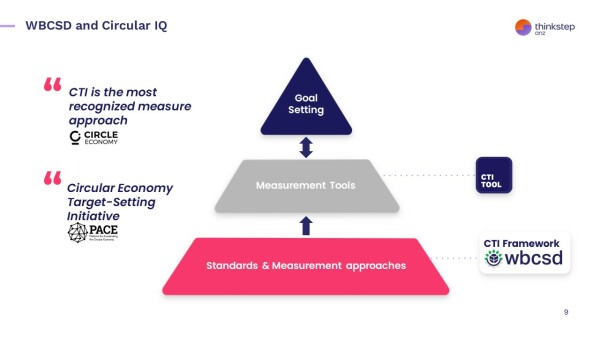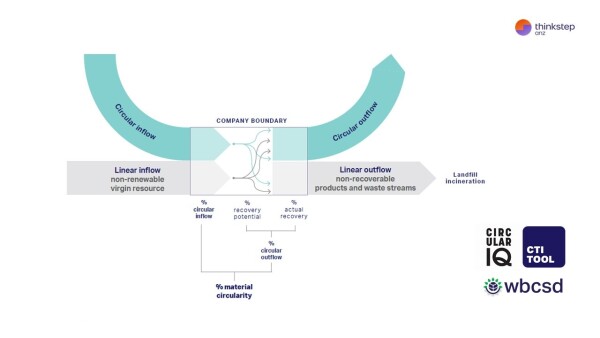Are you keen to make your business more circular but not sure where to start? This webinar shares steps you can take toward a circular economy. We introduce you to the Circular Transition Indicators (CTI) Tool. The CTI can help your business measure your circular performance, reduce your risks and strengthen your supply chain.
The CTI was developed by businesses and the World Business Council for Sustainable Development
Mike Burrell, the Executive Director of the New Zealand Sustainable Business Council, joined us to explain why the circular economy is important for SBC’s members and New Zealand and Australia. He attended circular economy panels at the World Business Council for Sustainable Development’s recent meeting.
Mike joined Sally Anne Kasner, our Senior Circular Economy and Strategy Specialist. Sally is an implementation partner for the CTI Tool. She introduced the tool and explained how it can help your business.
Here's a preview of the webinar
In the webinar we learned
The CTI can take your CE plans to the next level
Mike explained that SBC members like the Circular Economy concept but asked how they could make it happen. CTI is a useful tool for this. It can also get complex, so it’s good to work with someone who understands the framework. The CTI was developed by 30 global companies through the WBCSD’s Circular Economy programme.
CTI is a transparent and consistent framework and tool
Sally described how the CTI is a simple, objective and quantitative framework that can be applied to businesses of all industries, sizes and locations or individual products. It will allow companies to compete on performance, not on metric identification or methodology. Consistent circular metrics will open investment opportunities for circular initiatives that create value.
CTI is based on material flows through a company
By looking at these flows, your company can take steps to reduce the amount of resources you use and the waste you generate.
It looks at three intervention points:
- Inflow – how circular are the resources, materials, products and parts that your business sources?
- Outflow (recovery potential) – how does your company design products so that components and materials can be recovered?
- Outflow (actual recovery) – how much of the outflow does your company actually recover?
The CTI includes four indicator modules
These are:
- Close the loop – This module calculates how effectively your company closes the loop on material flows. This means that materials are kept in use and waste is minimised. This can be assessed at the company level, or at business unit, facility or product level.
- Optimise the loop (optional) – This module can show critical materials your business uses, it looks at how efficiently you use resources and at strategies to recover higher-value materials. This module evaluates the flows of critical material and only applies if your company uses these.
- Value the loop (optional) – This module shows the added business value of your company’s circular material flows. It goes beyond material flows to understand how circularity can create the greatest value using the fewest resources.
- Impact of the loop – This module helps your business understand the impact of circular strategies in achieving your climate-related sustainability objectives, e.g. reducing carbon emissions.

The benefits CTI can bring your business
- Sustainability – CTI helps lower the greenhouse gases you emit and the energy you consume while promoting resource recovery and the sustainability of your product. This lowers your costs and environmental impacts, and enhances your brand’s reputation.
- Resilience – CTI helps businesses plan an effective move towards a circular economy. This ‘just transition’ helps create jobs and ensures access to more sustainable resource use.
- Risk Management – CTI connects the shift from a linear to a circular economy with the need to prepare your business for regulations and to reduce emerging business risks.
- Strategic Planning – CTI can create effective roadmaps, letting your company grab opportunities from the circular economy, gain market advantage and strengthen your strategic planning.
Embracing the CTI Framework improves business sustainability, makes your strategy resilient and contributes to profitability.
This webinar was held on 23 May 2023
